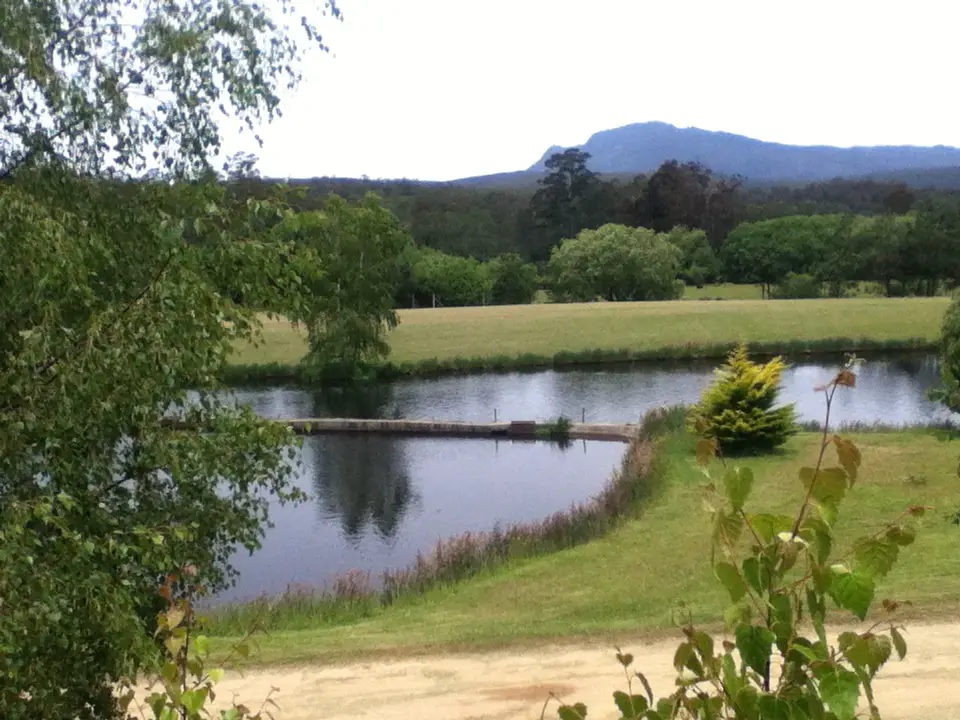

Travelling throughout North East Tasmania you’ll receive a warm, friendly welcome from people who enjoy helping visitors ease into the relaxed local lifestyle…

Take your time, don’t hurry – you’ll need more than a few days to experience all that North East Tasmania has to offer:
From the lookout atop the Sidling Range, on the A3 travelling from Launceston to Scottsdale, spectacular panoramic views extend across the Dorset municipality, from fertile farmland surrounding Scottsdale, to Bridport and the coastal areas, the surrounding mountains, Mt. Horror, Mt. Cameron and more – stretching all the way to the Furneaux Islands in Bass Strait!
TheMt. William National Park area, is home to Tasmania’s only endemic kangaroo – Great Forester Kangaroos. See them on the wildlife drive in the National Park! (Don’t forget you’ll need a National Parks Pass! Grab one at the Scottsdale Visitor Information Centre on your way!)
Branxholm was the site of Tasmania’s only Race Riot when, in 1877, Chinese miners on their way to the mining leases were confronted by a group of angry European miners. A gun was pulled, but the protagonist was quickly told by his fellows to ‘put it away’. The Red Bridge over the Ringarooma River in the Branxholm township commemorates this event.
Our very own Bridport averages more hours of sunshine annually than the popular seaside town of Bicheno on the East Coast, and is virtually equal in average annual temperatures! Overlooking Anderson Bay, it’s unspoilt beaches, walking tracks and wildflower reserve make it an ideal holiday retreat at any time of the year!
Barnbougle’s original golf course, Barnbougle Dunes, opened in December 2004, and is a Links Golf Course unlike any other in Australia. Within a week of opening in 2010, the adjacent course Lost Farm was rated in the Top 10 Courses in Australia by Golf Australia Magazine, and also entered US Golf Magazine’s Top 100 List. The course is now positioned firmly as one of the icons in Australia’s golfing crown, rated #3 in Australia by Australia Golf Magazine (behind The Dunes at #2), #23 in the World by US Golf Digest, and #72 in the World by US Golf Magazine. Here you can also sample superb food and wine, and enjoy friendly country hospitality!
Bridestowe Lavender Estate at Nabowla is the oldest and largest lavender plantation in the Southern Hemisphere and, in full bloom, is considered one of Tasmania’s most spectacular sights. Open year round, admission is free outside of the flowering season of December and January, and the Woodcroft Café features a wonderful array of lavender inspired cuisine. A beautifully arranged and abundantly stocked gift shop is a joy to browse! Don’t forget to sample the luscious lavender ice-cream!
The township of Moorina was, in the heyday of Tasmania’s Tin Rush, a distribution and transport centre as well as a mining town. It was one of the earliest townships in North East Tasmania, and the town is said to be named after a sister of Truganini – reported to be the last full blood Aboriginal Tasmanian. It was also from here that bodies were taken to the port of Boobyalla to be shipped back to China! A memorial and unique burning tower can be seen at the Moorina Cemetery, just off the A3 (Tasman Highway).
The Great Briseis Water Race is an amazing feat of engineering. Commenced in 1901, it was hand-built by three gangs of approximately 100 men in each. It was constructed from either end of the 48 km length, simultaneously and section by section over a period of just 15 months. Water harnessed from behind Ringarooma was channelled along the race to Derby, to provide a minimum of 24 million gallons daily to the large scale hydraulic mining at the Briseis Tin Mine, with the first release of water taking three weeks to reach the mine! Today the visitor can ‘walk with history’ along the Great Briseis Water Race Walk at Branxholm, and take in the remains of four metre deep cuttings through solid rock, sections of original stonewalling, remains of timber trestle fluming structures, and many other insights into the character of those who undertook this mighty task.
Legerwood is home to an amazing avenue of Memorial Carvings, a lasting tribute to WW1 soldiers from this tiny community. The trees were originally planted in 1918 – one for each of the fallen from the town, one for Gallipoli and one for the Anzacs. Carved in 1999 by skilled Tasmanian chainsaw carver Eddie Freeman, the soldiers and their stories are brought back to life in sculpture.
The Tin Dragon Interpretation Centre at Derby is a state-of-the-art attraction where, through an incredible 15 metre screened presentation, you can experience the power and the fury of water in the epic story of Tasmania’s Tin Rush and the miners who sought their fortune from this remarkable metal. Learn also how tin opened the world to exploration and discovery, and it’s effect on some of history’s greatest battles. Be awed by the might and tragedy of the 1929 destruction of the Briseis Mine in a fury of flooding, so intense it caused the river to reverse its flow for five miles upstream (!) and wreaked devastation on Derby and it’s people. The adjacent café is also just the spot for a great coffee or home cooked lunch.
 Our Region
Our Region





While elsewhere in Tasmania people are tucking up by the fire and going into winter hibernation, North East Tasmania comes alive to celebrate and showcase local arts and crafts annually on the June long weekend.
Discover more… + MAP